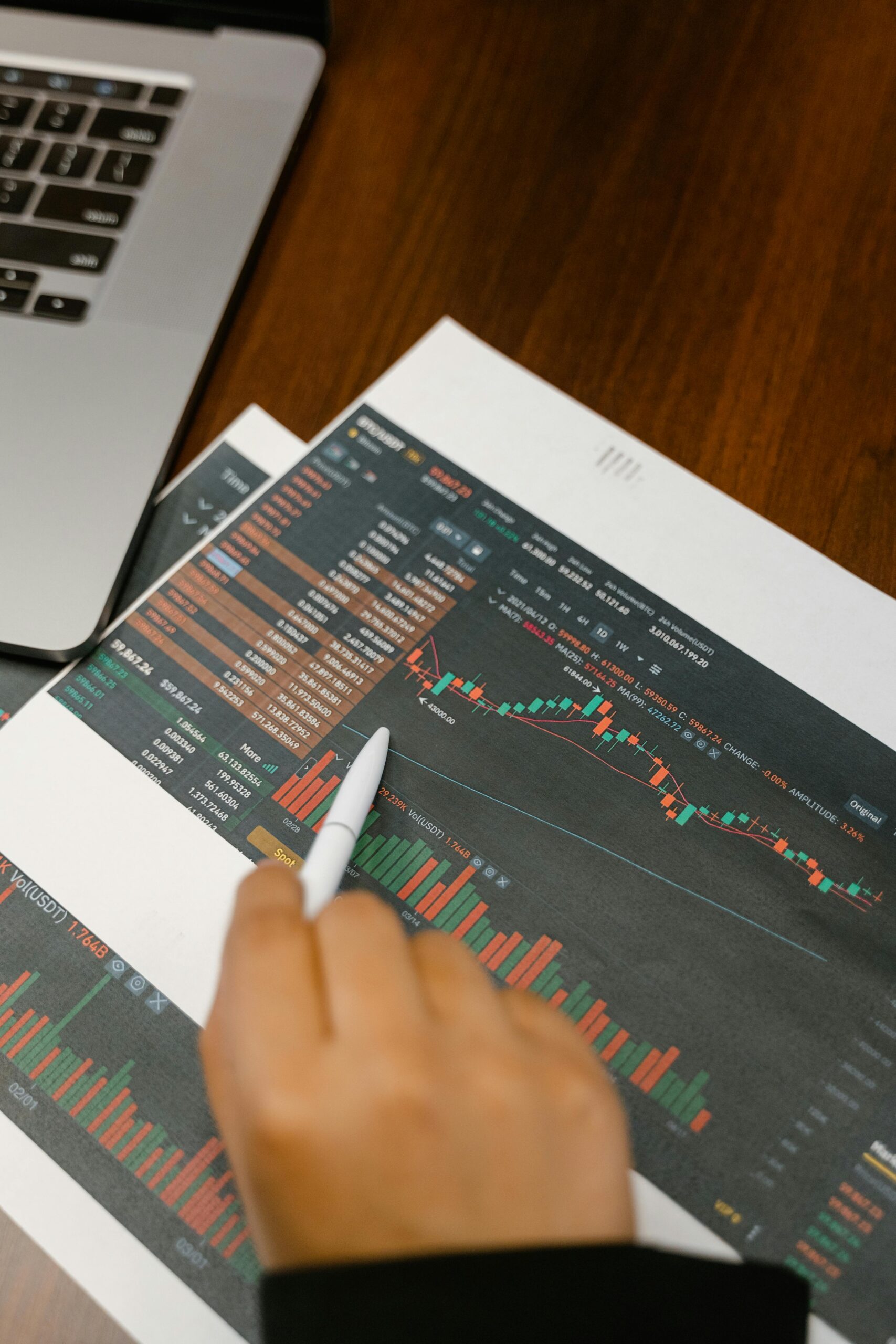When it comes to the world of exotic spices, Zafran price in Pakistan is a topic that sparks a lot of curiosity and excitement. Have you ever wondered what makes saffron, or zafran, so valuable and why its price varies so much across the market? This article will uncover the true value and benefits of zafran, diving deep into why this golden spice is often called the “Red Gold” of Pakistan. If you’re searching for the best zafran deals in Pakistan or want to understand how to spot authentic saffron without getting tricked by cheap imitations, keep reading!
Pakistan is one of the prime countries known for producing high-quality saffron, but the current zafran price in Pakistan can be confusing for many buyers. Prices fluctuate due to factors like saffron’s rarity, quality grades, and even the region it’s harvested from. Did you know that a tiny amount of saffron can cost more than its weight in gold? This luxury spice is not only prized for its unique aroma and flavor but also packed with powerful health benefits, including antioxidant properties and mood enhancement. So, what exactly influences the zafran market trends in Pakistan? And how can consumers make informed choices that guarantee value for money?
In this detailed guide, we’ll explore the latest saffron price trends in Pakistan 2024, reveal secret tips to buy genuine zafran at affordable prices, and highlight the countless health and beauty benefits that make saffron a must-have in every kitchen. Whether you’re a culinary enthusiast, health-conscious buyer, or someone looking to invest in premium spices, understanding the zafran price in Pakistan will help you unlock the full potential of this enchanting spice. Ready to dive in and discover how zafran can transform your lifestyle and wallet? Let’s get started!
Why Is Zafran Price in Pakistan So High? Unveiling the Factors Behind Its Market Value
Why Is Zafran Price in Pakistan So High? Unveiling the Factors Behind Its Market Value
In Pakistan, the price of zafran (saffron) is often a topic of surprise and curiosity for many people. Why does this precious spice cost so much? Zafran price in Pakistan remains significantly high compared to many other spices, and this article explore the reasons behind this market value. Understanding the factors that contribute to saffron’s cost will help consumers appreciate its true value and benefits. Plus, we’ll look at how the local market compares with international prices and what makes zafran so special.
What Makes Zafran So Expensive?
First of all, zafran is not like your everyday spice—it’s known as the “red gold” of spices because of its rarity and the labor-intensive process needed to harvest it. The saffron crocus flower blooms only once a year, and each flower produces just three tiny stigmas which are the saffron threads.
Key reasons why saffron price in Pakistan is so high:
- Labor-Intensive Harvesting: It takes about 150,000 flowers to produce just one kilogram of saffron. Workers must handpick these delicate stigmas early in the morning to preserve quality.
- Limited Growing Regions: In Pakistan, zafran is mainly cultivated in the northern areas like Gilgit-Baltistan and parts of Khyber Pakhtunkhwa. The climatic conditions suitable for saffron are very specific.
- Short Harvest Season: The flowering period is very short, usually lasting only 2-3 weeks in late autumn. Missing this window means no saffron production for the whole year.
- Delicate Processing: After harvesting, the stigmas need to be carefully dried in controlled conditions to maintain their aroma, color, and medicinal properties.
Because of these factors, the supply of saffron is naturally limited, pushing the price higher.
Zafran Price In Pakistan: Discover The True Value And Benefits
When you look at the price tag, it might seem like saffron is just an expensive luxury. However, zafran has many benefits that justify the investment. It’s not only used for flavoring food but also has medicinal and cosmetic uses.
Nutritional and Health Benefits of Zafran:
- Rich in antioxidants like crocin and safranal.
- Helps improve mood and reduce symptoms of depression.
- Acts as an anti-inflammatory agent.
- Can enhance memory and cognitive function.
- Traditionally used for digestive issues and menstrual health.
In traditional Pakistani medicine, saffron is considered a healing herb. It is used in various home remedies for skin care, boosting immunity, and even improving eyesight. This adds more value to the spice beyond its culinary use.
Comparative Pricing: Pakistan vs Other Countries
To understand why zafran price in Pakistan is high, it’s useful to compare with international markets. Here is a simple comparison of approximate saffron prices per gram in different countries:
| Country | Price per gram (USD) | Price per gram (PKR approx) |
|---|---|---|
| Iran | 1 to 2 | 280 to 560 |
| Spain | 3 to 5 | 840 to 1400 |
| India | 1.5 to 3 | 420 to 840 |
| Pakistan | 2 to 4 | 560 to 1120 |
(Note: Prices fluctuate due to quality and market conditions)
Pakistan’s saffron price sits in the mid to high range comparatively. Reasons include import costs for foreign saffron, local production scarcity, and demand from luxury food markets in Karachi and Lahore.
Factors Affecting Zafran Price In The Local Market
The local market dynamics also play a big role in determining saffron price in Pakistan:
- Quality Grading: High-quality saffron (deep red, long threads) commands premium prices. Lower grades with more yellow or white parts are cheaper.
- Counterfeit Products: Due to high demand, fake saffron or adulterated products sometimes enter the market, misleading buyers and affecting genuine prices.
- Currency Fluctuations: Since some saffron is imported, the exchange rate affects retail prices.
- Distribution Costs: Transporting saffron from remote northern areas to urban centers adds to the cost.
- Demand Peaks: Prices rise during festivals and wedding seasons when saffron-based dishes and gifts are popular.
Practical Examples Of Zafran Use In Pakistan
Here’s how saffron is commonly used around Pakistan, justifying its value:
- Cooking: Added to biryanis, desserts like kheer, and traditional sweets for aroma and color.
- Beverages: Used in saffron tea or milk to enhance flavor and health benefits.
- Cosmetics: Incorporated in face masks and creams for skin brightening.
- Gifting: Packaged
Top 5 Health Benefits of Zafran That Justify Its Premium Price in Pakistan
Zafran, also known as saffron, is one of the most expensive spices in the world, and in Pakistan, its price often raise many eyebrows. But if you ever wonder why zafran price in Pakistan is so high, it’s not just a matter of rarity or tradition. This golden-hued thread-like spice carries a lot more than just flavor; it offers numerous health benefits that justify its premium price. Let’s explore the top 5 health benefits of zafran that make it a worthy investment for many Pakistanis despite the cost.
What Makes Zafran So Expensive in Pakistan?
Before diving into benefits, it’s important to understand why zafran is costly here. Zafran is derived from the stigma of Crocus sativus flowers, and it takes about 150,000 flowers to produce just one kilogram of saffron. Labor-intensive harvesting and delicate processing add to the cost. In Pakistan, prices fluctuate due to import duties, quality variations, and market demand. As of recent data, the zafran price in Pakistan ranges from PKR 15,000 to PKR 50,000 per 10 grams depending on purity and source. Despite this, many prefer authentic saffron because its health and culinary benefits are unmatched.
1. Powerful Antioxidant Properties
One of the main health benefits of zafran is its rich antioxidant content. The spice contains bioactive compounds like crocin, crocetin, safranal, and kaempferol. These antioxidants help neutralize harmful free radicals in the body that can cause oxidative stress and cell damage. Oxidative stress is linked to aging and many chronic diseases such as heart problems and cancer. By adding zafran to your diet, you can support your body’s defense system and promote overall wellness.
Here’s a quick look at the antioxidants in saffron and their effects:
- Crocin: Gives saffron its bright color, helps improve mood and memory.
- Safranal: Responsible for saffron’s aroma, shows anti-depressant effects.
- Kaempferol: Protects against inflammation and cancer risk.
2. Enhances Mood and Fights Depression
Saffron has been used in traditional medicine for centuries to uplift mood and relieve symptoms of depression. Modern studies back this up, showing that compounds in zafran can increase serotonin levels in the brain, which is the neurotransmitter responsible for happiness and well-being. In Pakistan’s fast-paced life, many people deal with stress and mild depression, and using saffron might provide a natural remedy.
For example, clinical trials have found that saffron supplements were as effective as some prescription antidepressants but without the side effects. This makes it a valuable alternative for mental health support, especially for those who prefer herbal options.
3. Improves Heart Health
Heart diseases are among the leading causes of death in Pakistan, and saffron might help reduce this risk. The spice’s antioxidant properties reduce inflammation and oxidative damage in blood vessels. Additionally, saffron may help lower bad cholesterol (LDL) and improve blood pressure regulation. Regular consumption of saffron in moderation can support cardiovascular health over time.
Some practical examples of saffron’s heart benefits include:
- Reducing atherosclerosis risk by preventing plaque buildup.
- Enhancing blood circulation.
- Protecting the heart muscle from damage during stress.
4. Boosts Immunity and Fights Inflammation
Another reason why zafran price in Pakistan remains high is because of its immune-boosting capabilities. The spice contains vitamins and minerals like vitamin C, magnesium, and zinc that help strengthen the immune system. Plus, saffron has anti-inflammatory effects that can soothe joint pain and other inflammatory conditions common among Pakistanis, especially in colder months.
People often mix saffron in warm milk or tea during flu season to reduce symptoms and speed up recovery. This traditional use aligns well with science, as saffron’s compounds inhibit inflammatory pathways in the body.
5. Supports Skin Health and Anti-Aging
Beyond internal health, saffron is popular for its benefits on skin and appearance. Pakistani women have used saffron as a beauty aid for generations, adding it to face masks and creams. The antioxidant crocin helps reduce wrinkles, blemishes, and uneven skin tone by protecting skin cells from damage. Also, saffron’s anti-inflammatory properties reduce redness and irritation.
A simple home remedy example:
- Mix a few saffron strands with honey and yogurt.
- Apply it as a face mask for 15-20 minutes.
- This can leave skin glowing and refreshed.
Comparing Zafran Price And Quality In Pakistan
It’s important to note that not all saffron sold in the Pakistani market have same quality. Fake or adulterated saffron is common because of high demand and cost. Here is a simple comparison table highlighting typical price ranges and quality indicators:
| Zafran Type
How to Identify Genuine Zafran in Pakistan: Avoiding Fake Products at High Prices
In Pakistan, Zafran is considered one of the most precious spices, often called “red gold” because of its high price and rarity. But many people struggle with identifying genuine Zafran from fake or adulterated products, especially when shopping in local markets or online platforms. It becomes very important to know how to spot authentic Zafran, to avoid being cheated with low-quality or counterfeit products sold at high rates. This article will guide you through the process of identifying real Zafran, understanding its true price in Pakistan, and appreciating its numerous health benefits.
What Is Zafran and Why It’s So Expensive?
Zafran, also known as saffron, is the dried stigma of the Crocus sativus flower. Every flower produces only three stigmas, which are carefully handpicked during a very short harvesting period. This labor-intensive process makes Zafran the costliest spice worldwide. Historically, Zafran has been used for culinary, medicinal, and cosmetic purposes for thousands of years across various cultures, including Persian, Indian, and Middle Eastern.
In Pakistan, Zafran mainly comes from regions like Gilgit-Baltistan and parts of Punjab. Genuine Zafran is prized for its strong aroma, vivid red color, and delicate flavor, which fake versions often can’t match. Because of its high demand and limited supply, many sellers adulterate Zafran with other materials or sell low-quality strains at premium prices.
How to Identify Genuine Zafran in Pakistan?
Many buyers in Pakistan fell for fake Zafran scams due to lack of knowledge. Here is some practical tips to identify the real stuff:
- Color: Real Zafran threads have a deep red color with slight orange tips. If the threads look too bright or uniform, it might be artificial or dyed.
- Shape: Genuine stigmas are trumpet-shaped and slightly curved with a fine, thread-like texture. Fake ones are often straight or broken pieces.
- Smell: Authentic Zafran has a strong, earthy aroma with a hint of sweetness. If it smells chemical or weak, it’s likely fake.
- Taste Test: When chewing a thread, real Zafran tastes bitter and slightly metallic, not sweet or flavorless.
- Water Test: Put a few threads in warm water or milk. Genuine Zafran will slowly release a golden-yellow color without the threads losing their red color immediately. Fake ones dissolve fast and color the water unnaturally.
- Price Check: If the price is suspiciously low, it probably is not pure Zafran. High prices don’t guarantee authenticity but extremely cheap Zafran signals fake.
Zafran Price in Pakistan: Discover The True Value
The price of Zafran in Pakistan varies depending on the quality, origin, and season. On average, pure Zafran costs between 70,000 to 100,000 Pakistani Rupees per kilogram. However, due to fake products flooding the market, many sellers offer “Zafran” at much lower prices, which is either mixed with other substances or is a different spice altogether like safflower.
Below is a rough price range for different grades of Zafran in Pakistan:
| Grade | Price Per Gram (PKR) | Price Per Kilogram (PKR) |
|---|---|---|
| Premium Quality | 70 to 100 | 70,000 to 100,000 |
| Medium Quality | 40 to 70 | 40,000 to 70,000 |
| Low Quality | 20 to 40 | 20,000 to 40,000 (likely adulterated) |
Always buy Zafran from trusted retailers or brands that provide certifications or lab testing reports. Avoid buying bulk amounts from unknown sources or street vendors without proper verification.
Benefits of Using Genuine Zafran
Zafran is not only valued for its flavor and color but also for its numerous health benefits. Some of the well-known advantages of consuming pure Zafran include:
- Antioxidant Properties: Contains compounds like crocin and safranal that neutralize harmful free radicals.
- Mood Enhancement: Studies show Zafran may help reduce symptoms of depression and anxiety.
- Improves Digestion: Traditionally used to treat stomach disorders and improve appetite.
- Anti-Inflammatory Effects: Helps reduce inflammation and pain.
- Skin Health: Used in cosmetics for brightening skin and reducing pigmentation.
- Boosts Immunity: Regular consumption can strengthen the immune system.
Fake Zafran lacks these benefits because it doesn’t contain the essential active compounds. So, spending on authentic Zafran means investing in your health as well.
Comparing Zafran with Other Spices in Pakistan
To understand why Zafran prices are so high, comparing it with other common spices might help:
- Tur
Zafran Price Trends in Pakistan 2024: What Buyers Need to Know Before Purchasing
Zafran Price Trends in Pakistan 2024: What Buyers Need to Know Before Purchasing
Zafran, or saffron, is often called the “red gold” because of its high value and unique flavor. In Pakistan, the interest in saffron has been increasing rapidly over the recent years, especially as people become more aware of its numerous health benefits and culinary uses. But if you wants to buy zafran in Pakistan in 2024, knowing the price trends and what influences them is very important before making any purchase. The zafran price in Pakistan changes frequently due to many factors, and sometimes buyers get confused or even cheated because of lack of information.
Understanding Zafran Price In Pakistan: Discover The True Value And Benefits
Saffron is one of the most expensive spices worldwide, and Pakistan is no exception. The price of zafran in Pakistan is influenced by its quality, origin, and purity. Locally, saffron is mainly produced in the northern areas like Hunza and Gilgit Baltistan, where the climate is suitable for saffron cultivation. However, a big part of the saffron available in the market is imported from countries like Iran, Spain, and Afghanistan.
When looking for zafran price in Pakistan, buyers should understand that the price can vary widely:
- Pure saffron can cost between PKR 20,000 to PKR 60,000 per gram, depending on quality and origin.
- Low-quality or mixed saffron might be available around PKR 5,000 to PKR 15,000 per gram but risks being adulterated.
- Prices fluctuate with demand, harvest season, and geopolitical situations in exporting countries.
Why Zafran Price Fluctuates In Pakistan?
Several reasons makes the zafran price change frequently. One main factor is the limited production. Saffron cultivation is labor intensive and requires specific weather, so the supply is always limited. That’s why any slight changes in production affect the price drastically.
Another factor is the import policies and taxes. Since Pakistan imports a lot of saffron, any customs duty changes or import restrictions affect the overall market price. Also, currency fluctuations between Pakistani Rupees and foreign currencies like Iranian Rial or Euro impact the import cost.
Additionally, fake saffron or adulterated versions are common in the market. Sometimes, sellers mix saffron with cheaper materials like dyed threads or turmeric powder to increase weight. This adulteration not only affects the price but also deceives the buyers.
Historical Context: Zafran In Pakistan
Saffron has been used in South Asia for centuries, mostly in cooking, medicine, and religious ceremonies. In Pakistan, it never gained widespread cultivation until recent decades. The northern regions of Pakistan started commercial saffron farming in the early 2000s, encouraged by government initiatives and NGOs to improve local farmers’ income.
Iran remains the world’s largest saffron producer, contributing over 90% of the global supply. Pakistan’s production is tiny in comparison but growing each year. With increased awareness about saffron’s benefits, Pakistani buyers prefer local saffron sometimes, despite its higher price, because it is fresher and trusted.
The True Benefits of Zafran
Knowing the price is important, but understanding what you getting for that money matters more. Saffron is not just a spice; it has medicinal and therapeutic properties:
- Acts as an antioxidant and helps in fighting free radicals.
- Improves mood and reduces symptoms of depression and anxiety.
- Enhances memory and cognitive function.
- Supports digestion and relieves stomach problems.
- Used in skincare for anti-aging and complexion improvement.
Because of these benefits, many people in Pakistan use saffron in teas, desserts, and beauty products. This high demand keeps the price stable or rising, especially for pure, high-quality zafran.
How To Identify Genuine Zafran In Pakistan
Before buying saffron, one must know how to spot real saffron from fake or low-quality ones. Here are some practical tips:
- Look at the threads: Real saffron threads are trumpet-shaped and have a red color with slight orange tips.
- Smell test: Genuine saffron has a strong, sweet aroma similar to honey and hay.
- Water test: Put few threads in warm water. Real saffron releases color slowly and the water turns golden yellow, not red or orange immediately.
- Taste test: It has a bitter and slightly sweet taste.
- Price check: If the price is too low, be suspicious about its authenticity.
Zafran Price Comparison Table (2024, Approximate)
| Source | Quality Grade | Price per Gram (PKR) | Notes |
|---|---|---|---|
| Local Pakistan | Premium | 25,000 – 40,000 | Fresh, limited supply |
Where to Buy Affordable and Authentic Zafran in Pakistan: Best Online and Local Stores Reviewed
Zafran, also known as saffron, is one of the most precious and expensive spices worldwide. In Pakistan, it holds a special place in culinary traditions and is often used in desserts, biryanis, and special occasion dishes. But finding affordable and authentic zafran can be tricky. Many buyers gets confused with fake or diluted saffron that looks real but lacks aroma and color. This article will explore where to buy affordable and authentic zafran in Pakistan, including best online and local stores, plus insight into zafran price in Pakistan, helping you discover its true value and benefits.
What Is Zafran and Why It Is So Valuable?
Zafran comes from the stigmas of the Crocus sativus flower. Each flower has only three stigmas, and it takes thousands of flowers to produce a single gram of saffron. This is one reason why it is so expensive. The spice is famous for its distinctive aroma, a slightly sweet and floral taste, and rich golden color it imparts to dishes.
Historically, saffron has been used not just for cooking but in medicine and perfumes. Ancient civilizations in Persia and Greece valued it highly. In Pakistan, especially in regions like Gilgit-Baltistan and parts of Balochistan, saffron is harvested but in limited quantities. Most of the saffron in the Pakistani market is imported from Iran, which is the largest producer worldwide.
Zafran Price In Pakistan: Discover The True Value And Benefits
The price of zafran in Pakistan varies depending on quality, origin, and packaging. On average, pure saffron costs between 30,000 PKR to 50,000 PKR per 10 grams in local markets. Online stores may offer competitive prices but beware of fake products.
Factors influencing price:
- Purity (how free is it from fillers and dyes)
- Origin (Iranian saffron tends to be more expensive but authentic)
- Packaging (vacuum-sealed packs preserve freshness better)
- Grade of saffron (Sargol, Pushal, or Bunch)
Even though expensive, saffron offers many health benefits. It contains antioxidants and has been used traditionally to improve mood, digestion, and skin health. Using few strands in your tea or dishes can provide these benefits.
Where To Buy Affordable and Authentic Zafran In Pakistan?
Since saffron is valuable, buying from trusted sources is important. Here are some best options:
-
Local Spice Markets
- Jodia Bazaar, Karachi: Known for variety of spices, some shops offer saffron at reasonable rates. But you must know how to check quality yourself.
- Anarkali Bazaar, Lahore: Offers saffron from different regions but price and quality vary considerably.
- Sabzi Mandi, Islamabad: Local vendors sometimes have good quality saffron at negotiable prices.
-
Online Stores
- Homeshopping.pk: Offers vacuum-packed saffron with customer reviews, price approx 3,000 PKR per gram.
- Daraz.pk: Multiple sellers sell saffron, but buyer must check reviews and seller ratings carefully.
- Saffron.pk: Specializes in Pakistani and Iranian saffron, with transparent pricing and authenticity guarantees.
- Amazon Global: International sellers ship to Pakistan, but shipping fees increase total cost.
-
Specialized Herbal and Organic Stores
- Some stores in Karachi and Lahore offer organic saffron with certifications. These stores are pricier but reliable.
- Herbal stores also sometimes add saffron in combo packs with other herbs.
How To Identify Authentic Zafran?
Buying saffron without being scammed is challenge. Here are some practical tips for buyers:
- Look at the color: Authentic saffron strands are deep red with a slight orange tip. Yellow or white parts are less potent.
- Smell it: Real saffron has a strong, sweet, hay-like aroma. If no smell, it might be fake.
- Water test: Put a few strands in warm water or milk. Real saffron releases color slowly and doesn’t lose aroma quickly.
- Check texture: Pure saffron has a dry, brittle feel. Fake ones can feel soft or powdery.
- Price check: If price is too low, be suspicious. Good saffron cannot be cheap due to its labor-intensive harvesting.
Comparing Local vs Imported Zafran
| Aspect | Local Pakistani Saffron | Imported (Mainly Iranian) Saffron |
|---|---|---|
| Price | Slightly lower sometimes | Usually higher due to quality |
| Quality | Varies, often smaller batches | Generally consistent and high |
| Availability | Limited, seasonal | Available year-round |
| Authenticity Risk | Moderate, need careful check | Lower, if purchased from |
Conclusion
In conclusion, the price of zafran in Pakistan is influenced by various factors including quality, origin, and market demand, making it essential for buyers to stay informed before making a purchase. Authentic, high-grade saffron tends to be priced higher due to its superior aroma, color, and flavor, whereas lower-quality variants are more affordable but may lack the desired potency. Additionally, seasonal changes and import dynamics also affect the overall market rates. For consumers and businesses alike, understanding these variables can help in making more informed and cost-effective decisions. Whether you are using zafran for culinary purposes or medicinal benefits, investing in genuine products ensures the best results and value for money. Stay updated with current market trends and consider sourcing from reputable dealers to avoid counterfeit products. By doing so, you can enjoy the rich benefits of zafran while navigating its pricing landscape in Pakistan confidently.









